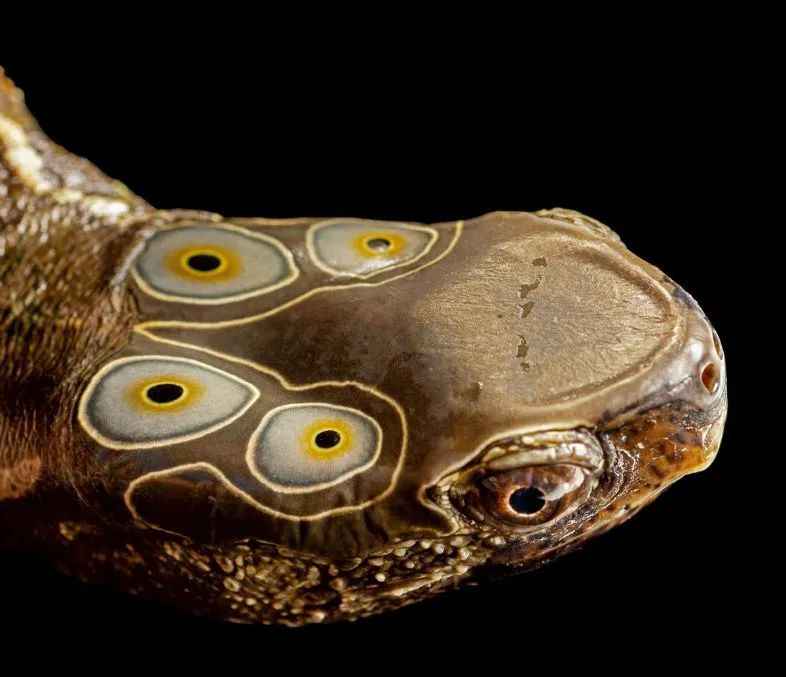Scientists believe these ocelli serve as a survival adaptation. When threatened by predators such as birds or snakes, the turtle retracts its head into its shell, leaving the spots exposed to confuse attackers—potentially misleading them about the turtle’s size or intended movement. The markings may also play a role in communication during mating seasons, helping individuals recognize conspecifics.
Inhabiting clear, fast-flowing mountain streams, marshes, and humid forest ecosystems, the four-eyed turtle ranges across southern China, northeastern Vietnam, and parts of Laos. Its diet consists of insects, small crustaceans, and aquatic plant matter, reflecting its dependence on pristine freshwater habitats. However, wild populations have plummeted in recent decades due to habitat loss and illegal exploitation.
Classified as "Endangered" on the IUCN Red List and listed in Appendix II of CITES (Convention on International Trade in Endangered Species), the species faces severe threats from habitat fragmentation—caused by dam construction, agricultural expansion, and water pollution—and poaching for the illegal pet trade, where its unique appearance makes it a coveted specimen. Traditional medicinal uses further exacerbate its decline.
Conservation efforts are underway, with research institutions in China and Vietnam launching captive breeding and reintroduction programs. Community outreach initiatives aim to reduce local exploitation, while habitat restoration projects target critical watersheds. Experts warn that without strengthened cross-border collaboration and stricter enforcement against illegal trade, this enigmatic "four-eyed" species could vanish from the wild within decades.

